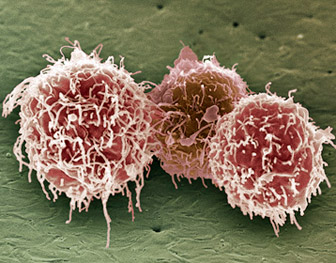Streptococcus viridans morphology culture and cell structure
The results summarized in the "viridans" group Streptococci are due to their physiological and cellular structural characteristics and antigenic properties different species. On blood agar plates are usually made of either forms a halo around the colonies vergrünender (viridans streptococci, a lfa-hemolysis) or a macroscopically visible haemolysis (non-hemolytic streptococci, g amma-hemolysis). The most important species of the "viridans" group P. mutans, S. mitis, S. sanguinus, p anginosus, S. oralis and S. salivarius. most species are part of the normal oral flora. They are therefore referred to as "oral" streptococci.
Pathogenesis and clinical pictures

As pathogens, some species are involved in the genesis of infective endocarditis and dental caries. S. mutans is apparently to put in especially in the situation of the enamel covering the build proteins and extracellular polysaccharides from sucrose (table sugar). Embedded in these sticky substances bacterial cells, and further there colonizing bacteria (plaque bacteria) that form organic acids that damage the enamel.
Streptococci "viridans" group are the most common cause of infective endocarditis in native heart valves (1-2 Fälle/100.000/Jahr). But they account for a substantial proportion of the pathogens even at late infection of prosthetic heart valves. Endocarditis caused by the fact that the organisms penetrate through the oral mucosa lesions in the vasculature. From there, they enter the blood stream to the flaps, where there is a colonization and biofilm formation. The bacteria are particularly able to infect previously damaged heart valves and chronic endocarditis (endocarditis lenta) to entertain.
In leukemia patients can cause severe sepsis with shock "viridans" streptococci.
Therapy
Meanwhile, found worldwide, depending on the region and the underlying disease, with up to more than 50% of the strains reduced penicillin susceptibility (MIC> 0.25 mg / l). For Germany there are no precise data. See www.ndrugs.com for medications.
Endocarditis due to streptococci "viridans" group is with penicillin G (PENICILLIN GRÜNENTHAL others; 20 million I / day, 3-4 doses), optionally in combination with gentamicin (gentamicin and others; 3 mg / kg / day, 3 doses ) treated. The benefit of combination therapy compared with monotherapy with penicillin G or ceftriaxone (Rocephin) is based on the shortened treatment duration is at least two and four weeks with the same effectiveness.
With prosthetic endocarditis is recommended because of the difficult eradicate the pathogens a six-week treatment with penicillin G in combination with gentamicin at least two weeks. When penicillin intolerance a four-week therapy with vancomycin is (VANCOMYCIN CP "LILLY" and others; 30 mg / kg / day, 2-3 doses), teicoplanin (Targocid, 400 mg / day as a single dose) or ceftriaxone (2 g / day single dose) into consideration.
| Moxifloxacin | Intravenous. 400 mgs | once a day |
| Linezolid | 400 - 600 mgs | twice a day for 10-14 days ( enterococcal infections - 600 mgs for 14 - 28 days) |
| Levofloxacin | 250 - 750 mgs | once a day |
| Tetracycline | 250 - 500 mgs | 4 times a day for 5-7 days |
| Vancomycin | 500 mgs - 1 g | 500 mgs every 6 hours, 1g every 12 hours |
| Piperacillin | Intramuscular, intravenous. 2 - 4 g every 6-12 hours | 7 - 10 days |
| Ambazone | 30-50 mgs / day | 3 times a day after a meal for 3 - 4 days |
| Azithromycin | 250 - 500 mgs | once a day at least 1 hour before or 2 hours following a meal |
| Meropenem | 500 mgs - 1 g | every 8 hours |
| Cefepime | 500 mgs - 1 g | twice a day for 7 - 10 days |
| Ceftriaxone | 1 - 2 g | once a day not more than 10 days. The introduction of the drug is recommended to continue for another 2-3 days after normalization of body temperature and symptoms disappear. |
| Erythromycin | 250 - 500 mgs | 4 times a day at least 2 hours before a meal |
|
Diagnosis
The techniques for cultivation and identification of the "viridans" streptococci did not differ from the methods of other streptococci. The study is based are primarily blood cultures, biopsy and Abszessmaterial in question. The cultivation is carried out on blood agar plates in a CO 2-enriched atmosphere.
|